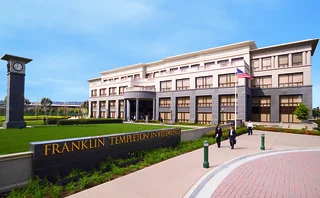Emerging Technologies and Avoiding Analysis Paralysis

To download a copy of the entire special report, sponsored by Cloudera, Advent Software, Maxeler Technologies, CenturyLink, and Green Key Technologies, click on this link.
- Question one of this five-part series
- Question two of this five-part series
- Question three of this five-part series
Participants:
- Carol Dow, principal, Vanguard Information Technology
- David Saul, chief scientist, State Street
- Patrick Angeles, chief architect, financial services, Cloudera
- Todd Gottula, executive vice president and CTO, Advent Software
- Oskar Mencer, CEO, Maxeler Technologies
- Roji Oommen, managing director, Financial Services, CenturyLink
- Anthony Tassone, CEO, Green Key Technologies
Question Four: Where do capital markets firms typically go wrong when it comes to evaluating emerging technologies? How do they arrive at a final decision as to whether they will adopt a certain emerging technology?
Anthony Tassone, CEO, Green Key Technologies: I think a firm can go wrong when it enters the discussion with a rock-solid preconceived notion of how something works rather than being open to how something could work. Interestingly, there is a lot of fear out  there that reducing infrastructure through cloud adoption will lead to job cutting. Often times, this leads to the precarious situation of legacy hardware purchase decisions being defended at all costs. It is also difficult to perform apples-to-apples comparisons between on-premises hardware and datacenters to that of cloud infrastructure that is offered as a service.
there that reducing infrastructure through cloud adoption will lead to job cutting. Often times, this leads to the precarious situation of legacy hardware purchase decisions being defended at all costs. It is also difficult to perform apples-to-apples comparisons between on-premises hardware and datacenters to that of cloud infrastructure that is offered as a service.
Therefore, I think it is vital for the decision to adopt cloud technology be agreed at the highest levels of a company, then implemented incrementally with the return on investment measured side-by-side with their local hardware installations. The result is that management has a compass for further scaling, in addition to a fact-based guide when making future technology decisions, and employees have the confidence the boat they are sailing in is heading in the right direction.
Patrick Angeles, chief architect, financial services, Cloudera: Going it alone is never a good idea. Companies that do, miss out on lessons learned from others that traveled the same road of new technology adoption. Companies can usually avoid costly mistakes by seeking out partners and practitioners that have demonstrated success ─ providing a solid foundation to start from. It's also important to recognize the nuances across industries. For example, a financial institution has  vastly different requirements surrounding its data than a healthcare agency or educational institution. Seeking out best practices from the right experts offers unique insights and specialized learning. You would never ask a Ferrari dealer for advice on what truck to buy-that same careful thinking should apply to your IT decisions too.
vastly different requirements surrounding its data than a healthcare agency or educational institution. Seeking out best practices from the right experts offers unique insights and specialized learning. You would never ask a Ferrari dealer for advice on what truck to buy-that same careful thinking should apply to your IT decisions too.
Above all, don't rush headlong into change. A company's data is one of its most valuable assets, so moving forward with a proof of concept or pilot project may yield important insights and results. Many companies have implemented Hadoop distributions, and by exploring its unique capabilities, they have then integrated additional components that were best suited to meet their objectives.
"There is a lot of fear out there that reducing infrastructure through cloud adoption will lead to job cutting. Often times, this leads to the precarious situation of legacy hardware purchase decisions being defended at all costs." ─ Anthony Tassone, CEO, Green Key Technologies:
David Saul, chief scientist, State Street: The biggest mistakes people make are being too conservative and not experimenting enough. You need to try things out because not everything is going to work and not everything is going to match your  environment. In financial services we have historically been very conservative, which is not surprising because we're dealing with people's assets. But that shouldn't always extend to being conservative with trying new technologies. And being too late, you've lost your competitive advantage.
environment. In financial services we have historically been very conservative, which is not surprising because we're dealing with people's assets. But that shouldn't always extend to being conservative with trying new technologies. And being too late, you've lost your competitive advantage.
Another big mistake people make is not being capable of turning off a project when they recognize that it isn't going to achieve its objective. All too often people throw good money after bad. The successful innovators are the ones who try things and then recognize when something is not going to deliver value and cut it off.
Carol Dow, principal, Vanguard Information Technology: Firms usually go wrong when they only focus on the current state. It is important to focus on where to scale for the future. Often, the number one factor in evaluating technologies is cost. However, it is important to  remember that these technologies could have a significant return on investment. Firms need to set specific goals on how they want to improve their business and marry that to certain emerging technologies. Another area of caution is rapidly changing technology solutions. The pace of change with emerging technologies is quick. The technology solution that looks appealing today can be surpassed by other technologies by the time a large firm completes a roll out. To ensure a viable solution, it's important to do swift yet thorough research not only on emerging technologies, but also on suppliers.
remember that these technologies could have a significant return on investment. Firms need to set specific goals on how they want to improve their business and marry that to certain emerging technologies. Another area of caution is rapidly changing technology solutions. The pace of change with emerging technologies is quick. The technology solution that looks appealing today can be surpassed by other technologies by the time a large firm completes a roll out. To ensure a viable solution, it's important to do swift yet thorough research not only on emerging technologies, but also on suppliers.
Todd Gottula, executive vice president and CTO, Advent Software: When firms evaluate emerging technologies, they can go wrong in one of two major ways. On one hand, they can select a technology that is  so cutting-edge it hasn't been proven or tested, which means it could end up being a dead-end solution with no future development or innovation. On the other hand, firms can also be too slow to adopt an emerging technology, allowing their competitors to accelerate past them.
so cutting-edge it hasn't been proven or tested, which means it could end up being a dead-end solution with no future development or innovation. On the other hand, firms can also be too slow to adopt an emerging technology, allowing their competitors to accelerate past them.
Those two points are driving capital markets firms to increasingly rely on trusted providers-those who are closer to the technologies as they emerge and have the budgets to stay up-to-date to make those decisions on their behalf and manage this risk for them.
Oskar Mencer, CEO, Maxeler Technologies: The world is not easily split into right and wrong. By missing out on early adoption of new technologies, there is a risk of missing out on potential gains and competitive advantage. There is also a risk of paying more attention to the large technology companies and missing out on innovation from small and innovative firms that can be a lot more efficient than their large counterparts.
Roji Oommen, managing director, Financial Services, CenturyLink: Given the constant pace of technology change, attempting to make medium-term-let alone long-term-predictions can be tricky. That said, capital markets firms generally have a strong track record in utilizing  new technology to their advantage. Clearly, the power of emerging technology is a tremendous differentiator between the most innovative and aggressive, and the laggards. Amid an environment of both regulatory and economic pressures wreaking havoc on business models, this gap may be costly for those firms not willing to adopt change. We believe an approach mixing both direct trial and experimentation, in conjunction with leveraging strong partners also on the forefront of technology adoption, affords the best chance of success.
new technology to their advantage. Clearly, the power of emerging technology is a tremendous differentiator between the most innovative and aggressive, and the laggards. Amid an environment of both regulatory and economic pressures wreaking havoc on business models, this gap may be costly for those firms not willing to adopt change. We believe an approach mixing both direct trial and experimentation, in conjunction with leveraging strong partners also on the forefront of technology adoption, affords the best chance of success.
Only users who have a paid subscription or are part of a corporate subscription are able to print or copy content.
To access these options, along with all other subscription benefits, please contact info@waterstechnology.com or view our subscription options here: https://subscriptions.waterstechnology.com/subscribe
You are currently unable to print this content. Please contact info@waterstechnology.com to find out more.
You are currently unable to copy this content. Please contact info@waterstechnology.com to find out more.
Copyright Infopro Digital Limited. All rights reserved.
As outlined in our terms and conditions, https://www.infopro-digital.com/terms-and-conditions/subscriptions/ (point 2.4), printing is limited to a single copy.
If you would like to purchase additional rights please email info@waterstechnology.com
Copyright Infopro Digital Limited. All rights reserved.
You may share this content using our article tools. As outlined in our terms and conditions, https://www.infopro-digital.com/terms-and-conditions/subscriptions/ (clause 2.4), an Authorised User may only make one copy of the materials for their own personal use. You must also comply with the restrictions in clause 2.5.
If you would like to purchase additional rights please email info@waterstechnology.com
More on Emerging Technologies
Finos’ orchestration platform, digital asset hype, OMS news and more
The Waters Cooler: ISI’s sovereign debt footprint, Bolsa Mexicana’s modernization efforts, Franklin Templeton’s DeFi play, and more.
BlackRock and DRW execs bullish on tokenization potential
DRW’s Don Wilson expects every instrument to be traded on-chain in five years’ time.
Barclays carefully studying stablecoins
CEO CS Venkatakrishnan called the class of digital assets “broad and fascinating,” but urged peers to consider how it fits into the current banking deposit framework.
How an asset manager employs analytics to evaluate performance
Channing Capital, an institutional investment firm managing nearly $5 billion in assets, uses Aapryl to analyze its performance.
Nasdaq looks to ramp up tokenized securities efforts
Nasdaq CEO Adena Friedman wants to see tokenized securities come to the US markets “in a staged process.”
Franklin Templeton’s great DeFi migration
TradFi’s money and DeFi’s tech will inevitably combine, says the asset manager’s futurist-in-residence.
S&P’s $1.8 billion buy, an FIA restructure, a tokenization craze, and more
The Waters Cooler: CAIS creates CAISey, BNY deploys EquiLend, and more in this week’s news roundup.
When it comes to cybersec, the walls of separation are too high
Waters Wrap: Anthony examines some recent statements made by prominent cybersecurity experts and why those words might ring hollow.








